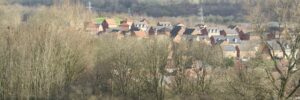
Old Trafford is set to undergo a major transformation following the designation of the area as a Mayoral Development Area (MDA) by the Greater Manchester Combined Authority. The decision marks a significant milestone in efforts to regenerate the historic district surrounding Manchester United’s iconic stadium and signals the start of what could become one of the most ambitious urban renewal projects in the UK.
The designation follows a period of public consultation, during which residents, businesses, and community groups were invited to share their views on the proposed regeneration. The feedback has now been reviewed and incorporated into the mayor’s formal decision, paving the way for the creation of a new statutory body – the Old Trafford Regeneration Mayoral Development Corporation (MDC). Trafford Council has also endorsed the plan, underlining local political support for the project.
The new corporation will be chaired by Lord Sebastian Coe, who brings with him extensive experience from leading large-scale projects such as the London 2012 Olympic Games. As chair, Coe will oversee a body with the power to acquire land, form development partnerships, and fast-track projects across the regeneration zone. The aim is to deliver coordinated, high-quality development more efficiently than would be possible through standard planning routes.
At the heart of the vision is the ambition to transform Old Trafford into a dynamic hub for sport, business, and community life. Manchester United’s stadium will serve as the focal point of a wider district that includes new housing, commercial space, improved transport infrastructure, and cultural and leisure amenities. Club executives have described the redevelopment not merely as a stadium rebuild but as a catalyst for regional growth, a project designed to benefit the entire Greater Manchester area. Economic modelling commissioned by the club has suggested the regeneration could contribute billions to the UK economy and create tens of thousands of new jobs.
In early 2025, Trafford Council approved Manchester United’s strategic development framework for the area, estimating that up to 48,000 jobs and 15,000 homes could be created, with an economic boost valued at more than £4 billion. The plans align with wider regional strategies to deliver more housing and improve connectivity in and around Greater Manchester.
However, the regeneration faces considerable challenges. Land assembly and potential compulsory purchase orders could prove complex, and significant investment will be required to deliver the necessary infrastructure. While Manchester United and the MDC are not seeking direct government funding for the stadium itself, they have appealed for central support to help finance roads, transport links, and other enabling works essential to the broader regeneration effort. Mayor Andy Burnham has been in discussions with ministers to secure up to £200 million in public funding to support the initiative.
Improving transport links will be a central focus of the MDC’s work, with plans to enhance public access to the area on both matchdays and non-matchdays. The regeneration is expected to tie into Greater Manchester’s wider ambitions for integrated, sustainable transport networks and for revitalising communities across the region.
With the formal establishment of the Old Trafford Regeneration Mayoral Development Corporation now approved, detailed planning and delivery work can begin. The new body will take responsibility for assembling land, coordinating investment, and overseeing the design and execution of projects across the area. Its success will depend on close collaboration between Trafford Council, the Greater Manchester mayoral office, private investors, transport bodies, and the local community.
